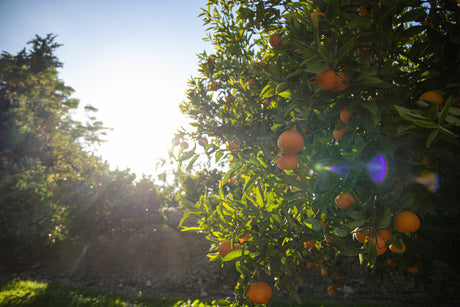Prickly pears: Exotic fruit with prickly secrets
Prickly pears , also known as prickly pears or prickly pears, are the edible fruits of cacti found primarily in warm and dry regions. These striking fruits, which range in color from bright red to orange to yellow, have gained increasing popularity in recent years. Their unique flavor, unusual texture, and numerous uses make them an exciting culinary ingredient.
In this blog post, we take a closer look at the origin, cultivation, culinary possibilities and sustainable value of the prickly pear.
Origin and distribution of the prickly pear
The prickly pear originated in Mexico, where it has been an integral part of the local diet for centuries. Even in pre-Columbian times, the Aztecs and other indigenous peoples used this fruit both as food and for ritual purposes. From Mexico, the plant eventually found its way to other regions of the world, particularly the countries around the Mediterranean, North Africa, and parts of South America.
Its ability to thrive even under extreme conditions made the cactus plant particularly attractive for regions with harsh climatic conditions. Today, it can be found in many parts of the world, from the Canary Islands to the desert-like landscapes of North Africa. This adaptability has helped make the prickly pear one of the most important plants in areas with limited water availability.
The plant and its fruits
The prickly pear grows on cacti of the genus Opuntia , which are characterized by their flat, oval leaves—also called "ears" or "pads." These leaves are covered with small thorns that protect the plant from predators. The fruits develop on the edges of these leaves and vary in color depending on the variety.
The prickly pear itself is oval and has a prickly outer skin covered with fine, hair-like spines. These spines, also called glochidia, are tiny but extremely uncomfortable when they pierce the skin. Therefore, when peeling the fruit, you should wear gloves, a cloth, or barbecue tongs. Cut the prickly pears lengthwise and scoop out the insides. Or peel them, slice them, or dice them. Once the skin is removed, the juicy, slightly grainy flesh is revealed. This flesh contains numerous small, edible seeds.

Characteristics
The prickly pear is a fruit known for its high content of vitamins, minerals, and other plant-based nutrients. It contains, for example, vitamin C, which plays an important role in numerous bodily functions. Furthermore, the prickly pear also contains fiber, which can play a valuable role in the diet. This fiber is found in both the fruit's flesh and the edible seeds.
In addition, prickly pears are rich in various antioxidants such as flavonoids and betalains. These substances are often valued in foods with intense coloring, as they act as natural colorants and protectants for plants. Antioxidants in the diet are also often considered for this reason.
The prickly pear also provides minerals such as potassium and magnesium, which play an important role in many bodily processes. Potassium, for example, is an essential component of numerous metabolic processes. Magnesium is often considered in connection with muscle and nerve function.
Due to its natural sugar content, the prickly pear is also considered an energy source, while its high water content makes it a refreshing addition to a varied diet. Its combination of fiber, vitamins, minerals, and phytochemicals makes the prickly pear a fruit that is popular in a variety of diets.
Prickly pears in the kitchen
The prickly pear offers a wide variety of uses in the kitchen. Eaten raw, it captivates with its sweet and sour flavor, reminiscent of a blend of melon, pear, and a light citrus aroma. Its refreshing taste makes it an ideal ingredient in fruit salads or as a snack between meals.
Those who like to experiment can also process prickly pears into juice, jam, or jelly. Their strong aroma and natural sweetness are particularly well-developed in these preparations. In many Mediterranean countries, they are processed into a special syrup or liqueur, such as the Sicilian "Ficodindia" liqueur, which is made from the ripe fruits.
In Mexico, not only the fruits but also the fleshy "pads" of the plant are used in cooking. These leaves, called "nopales," are a popular ingredient in traditional dishes such as nopalitos salad or tacos. They have a slightly sour note and are usually boiled or fried before consumption.
Harvesting and storing prickly pears
Harvesting prickly pears is challenging because the fruits are covered in tiny, barely visible spines. To avoid injury, they should always be harvested using special tools or gloves. The spines must be carefully removed before the fruit is ready to eat.
Fresh prickly pears should be stored in the refrigerator, where they will keep for up to a week. However, they should be removed from the refrigerator well in advance of consumption, as they develop their full flavor at room temperature. If you want to preserve prickly pears for longer, you can also freeze them or make them into jam.
Conclusion
The prickly pear is a fruit that surprises in many ways. Its exotic appearance, refreshing taste, and versatile uses make it an exciting culinary ingredient. Furthermore, as a cultivated plant, it has great potential in sustainable agriculture and plays an important role in the fight against desertification and soil erosion.
Whether raw, as juice or in the form of jellies and liqueurs – the prickly pear brings variety to the table and certainly deserves its place in the modern diet.
We ship natural prickly pears without any preservatives.


